![]()
Farnsworth Art Museum in Rockland is the museum in Maine which has the largest collection of Andrew Wyeth’s paintings, and they are shown in the museum as well as in the Wyeth Centre and the Wyeth study Centre together with work of N. C. Wyeth and James Wyeth.
Rockland is also the location where the dry brush called The Slip is made. It shows a Coast Guard sail boat on a slip, in front of sail loft, and it is painted in 1958. It is not to be expected that this sail loft exists today, but perhaps I found the building close to the Granit Inn in the harbour.
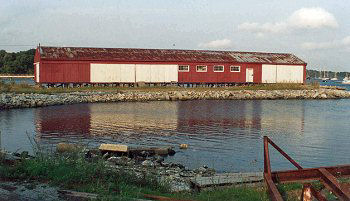
This building may be the sail loft
shown in The Slip.
If we drive towards Thomaston and turn left at route 131 the Finnish Congregational Church will be located on the left side. This church with the characteristic tower is the motive for several paintings as Cowbirds, Finn Town and The Roofer.
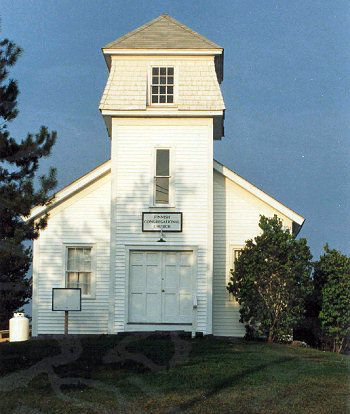
The Finnish Congregational Church at
route 131.
Further down the road close to Willy’s
Corner is another church where the dry brush Perpetual Care
was made. Obviously a churchyard does not undergo many changes, so it was
easy to find the exact location from which Andrew Wyeth has made the
painting. He must have been sitting on the ground to obtain the perspective
shown in the painting. The painting shows the building in a realistic way
with the elimination of only a few windows. A handicap entrance is added to
the church after the watercolour has been made in 1961.
The caretaker at the churchyard told me that his grandfather was buried at
the gravestone to the left in the photo. He was a Swede, and he was a
stonecutter. A lot of people came from Finland and Sweden to work in the
quarry, and they made building materials for the expansion of New York and
other towns down the coast. The caretaker also told me that Toll Rope
was painted in this church and that his brother was a model in this
painting, although he was later removed.
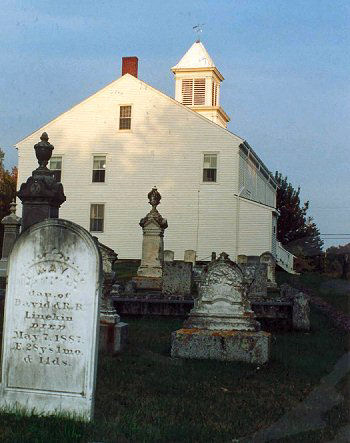
Exact location for the painting Perpetual
Care.
That evening I had the experience to be seated at Christina’s kitchen table from the Olson House, because the brother of the caretaker bought the table at an auction after Christina and Alvaro have passed away.
If we continue down Turkey Road at the east side of the peninsula towards port Clyde we will pass the location of Line of Fire, Backwater, Rose Hips and Hunter’s Ledge.
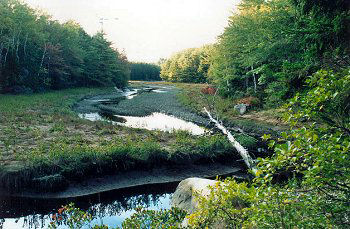
Location for Backwater, Line of fire
and Rose Hips at Turkey Road.
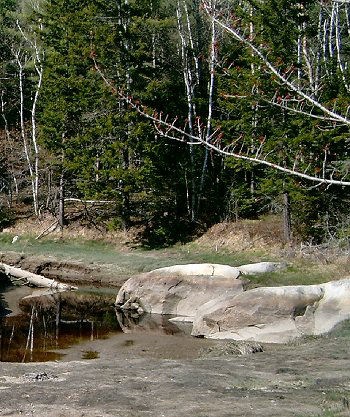
Hunter’s Ledge. The painting is made at
high tide with the hunter standing on the rock.
The scene for Sea Anchor is probably seen on the road towards Martinsville.
In Port Clyde it is easy to spot Around the Corner, especially because the owner seems to keep the flowers as they were arranged in Andrew Wyeth’s painting. Also the church door Church at the Port is easy to find.
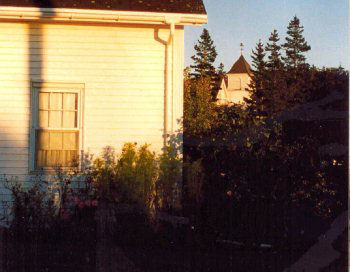
The location of Around the Corner.
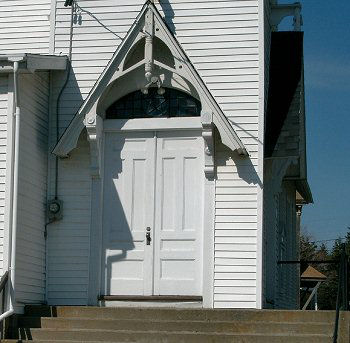
The location of Church at the Port.
Marshall Point Light is the lighthouse close to Port Clyde. Andrew Wyeth has made several paintings at this location as Marshall Point Light, Fog Bell, Life Boat Shed, Cut Granite and Wash House. Many of the buildings at the location are removed today, but they can be seen on an old photo of Marshall Point light.
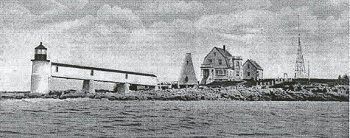
An old photo of Marshall Point Light
with the lighthouse,
the fog-bell house which was torn down in the 1960s,
the keepers house, the wash house behind the keepers house,
and even a Loran mast to the right.
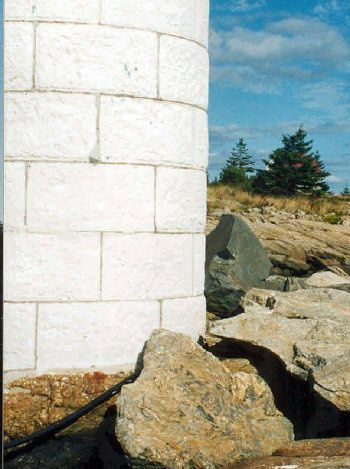
The location of Cut Granite. The
fog-bell house
was still present in Andrew Wyeth’s painting of that time.
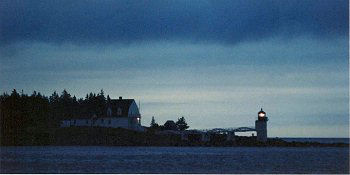
The scenes behind Marshall Point Light.
This photo was taken from the boat “Laura B”
on its way from Port Clyde to Monhegan Island
in an early morning in October 2002.
By the way, the wooden bridge to the lighthouse was the eastern designation of Forrest Gump’s cross country jogging in the film “Forrest Gump”.